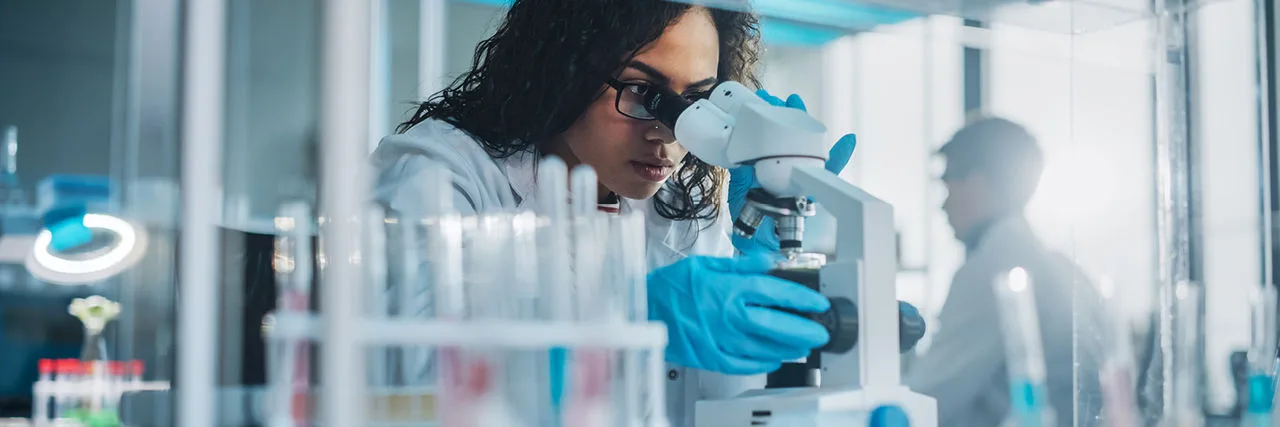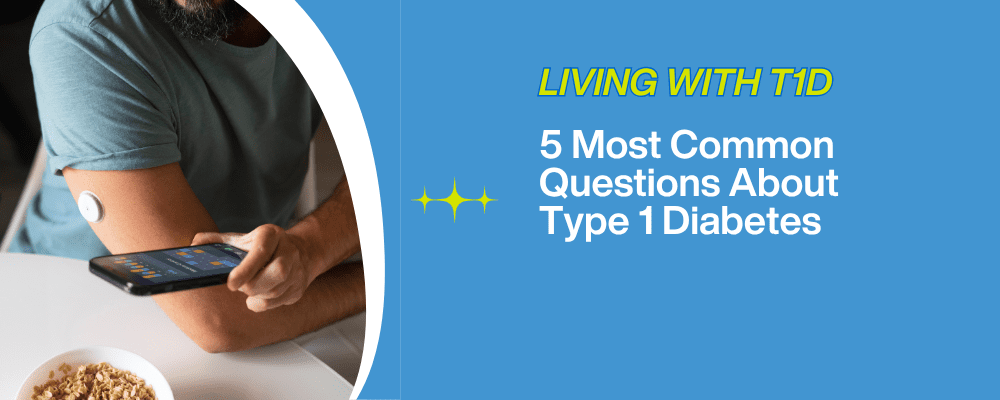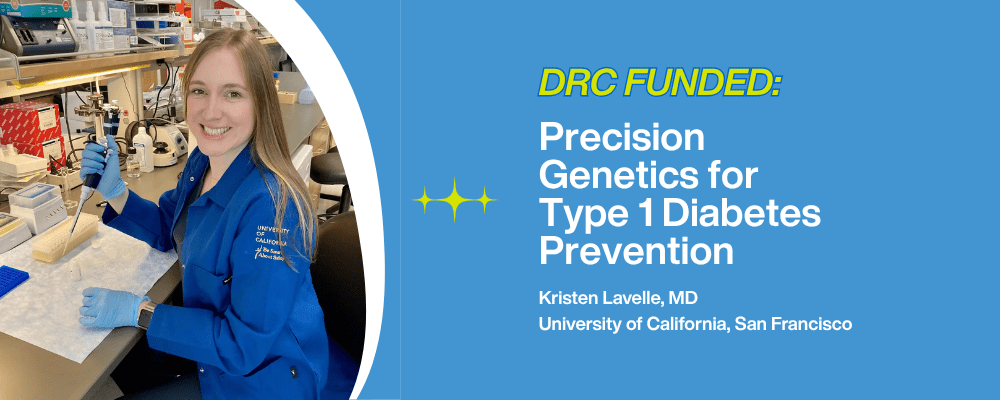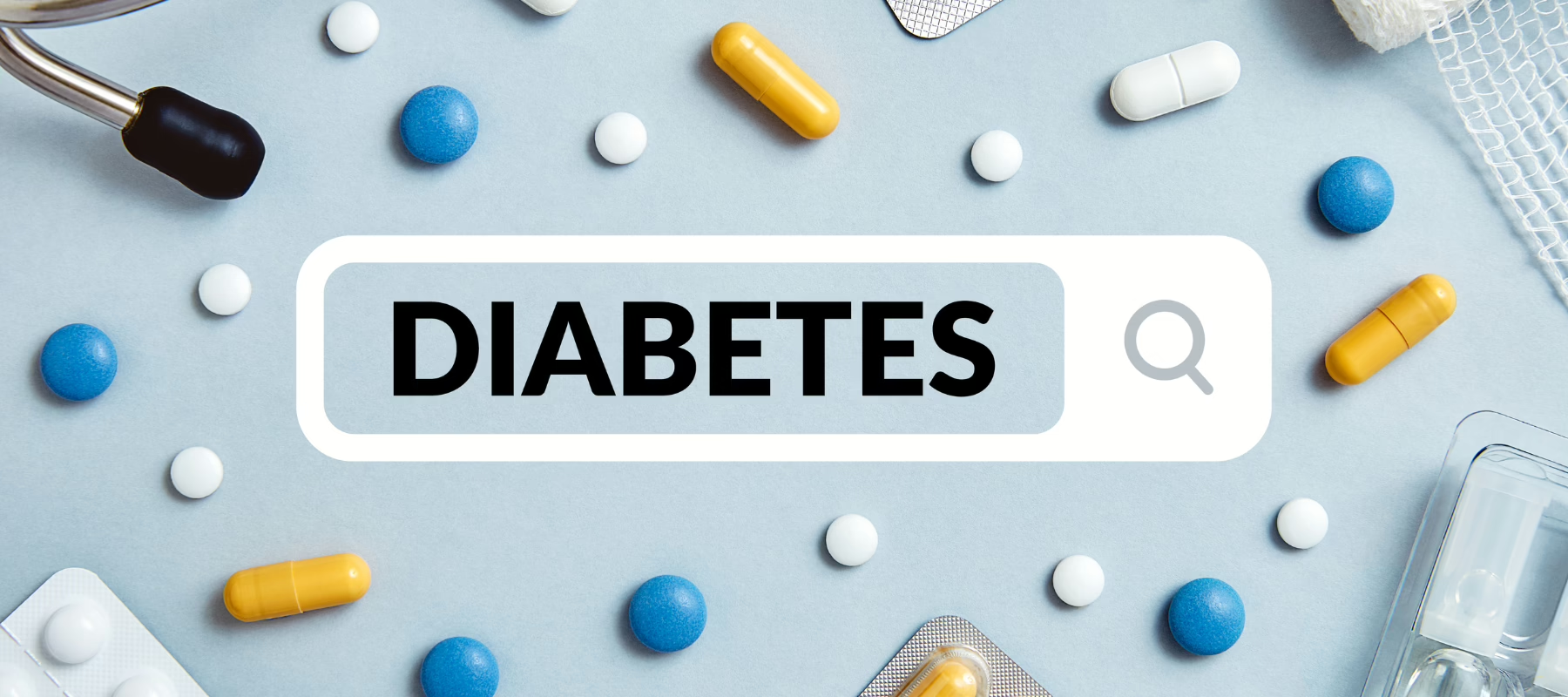This March, as we celebrate Women’s History Month, let’s shine a light on the remarkable women pushing boundaries in type 1 diabetes (T1D) research.
Funded by Diabetes Research Connection (DRC), female researchers are at the forefront, making significant strides toward understanding and treating this challenging condition. Their dedication and groundbreaking work are not just advancing science; they’re changing lives.
Join us in exploring the contributions of these trailblazers and discover how their efforts are shaping the future of T1D care. Their stories are a testament to the power of female leadership in the fight against diabetes, and a reminder of the critical role of community support in driving research forward.
Celebrating Female Researchers
Diabetes Research Connection is funding some of the most inspiring female researchers in the field of T1D research, each bringing their unique stories, perspectives, and dedication to the forefront of scientific discovery. Their work advances our understanding of T1D and paves the way for future innovations in treatment and care.
Janelle Tobias’s journey from a T1D diagnosis at 13 to a Postdoctoral Scholar showcases the personal drive that fuels her research. As a Latina and a patient herself, Janelle brings invaluable insights into the diversity and design of clinical studies, emphasizing the need for varied perspectives in diabetes research.
Kristen Lavelle, another esteemed researcher, shares a similar personal connection with T1D, having been diagnosed at 10 years old. Her path has led her through the rigors of medical school and into the world of endocrinology, where she now focuses on the discovery of novel T1D genes.
These researchers embody the spirit of innovation and resilience that DRC celebrates. Their stories are not just about overcoming personal and professional hurdles; they are about contributing to a larger mission of understanding and ultimately defeating T1D. Through their work, they inspire future generations of female scientists and also the broader T1D community.
Their dedication underscores the critical role of support from organizations like DRC and the broader community. By fostering an environment where female researchers can thrive, we continue to make strides toward a future where T1D can be better managed or even cured. Insights from our previous blog, Cell Silence Can Be Golden to Improving the Cure for T1D, highlight innovative research approaches driving this progress. Let’s honor these trailblazers by supporting their groundbreaking work and the invaluable contributions they make to diabetes research.
Q&A With DRC Researchers
In the realm of T1D research, female scientists are making significant strides, despite the challenges they face in a field traditionally dominated by men. At Diabetes Research Connection, we’re proud to support these pioneering women. Let’s dive into their experiences, insights, and the exciting future they see for diabetes research.
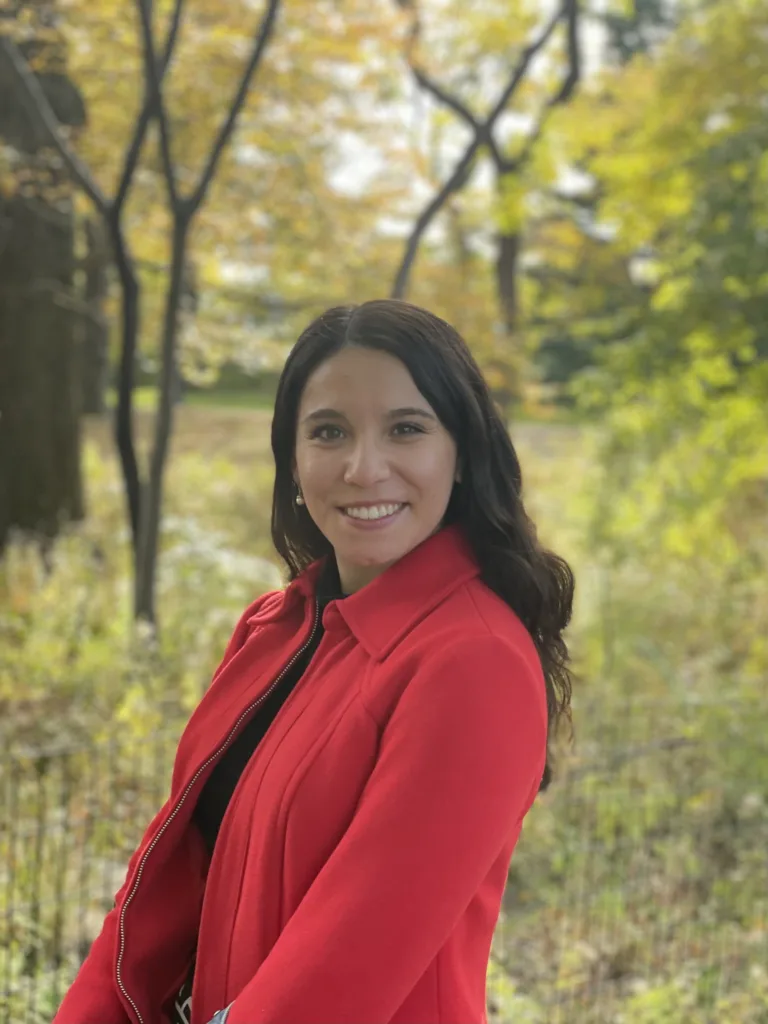
Janelle Tobias
Q. What inspired you to focus your research on diabetes, and how do you hope your work will contribute to the understanding or treatment of T1D?
A. I was diagnosed with T1D when I was 13 years old. I had so many questions about what caused the disease, how it worked, and why there wasn’t a cure. As a patient, I felt frustrated that my questions did not have complete answers, and that my only treatment option was multiple daily insulin injections. So I decided to become a scientist!
Currently, I am a Postdoctoral Scholar in the Parent Lab at the University of California, San Francisco. My research involves turning a special cell type, called stem cells, into insulin-producing beta-like cells. The goal is to engineer these cells so that they are protected against the immune system so that they can be transplanted into T1D patients without rejection or autoimmune attack. I hope that this work can lead to a viable cure.
Q. As a female researcher in a field that has historically been male-dominated, what unique perspectives do you believe you bring to diabetes research, and how have these perspectives influenced your work?
A. Both as a Latina and T1D patient, I try to bring my personal experiences into my work. I tend to notice when clinical studies lack diversity in their participant recruitment, or when animal studies only include data from male mice only.
I discuss these disparities with my colleagues so that they might also consider how they design their experiments. Diabetes is a complex disease, and I believe it will require diverse minds working together to develop improved therapies and treatments. I consider another key part of my work as mentoring and empowering diverse students interested in pursuing a scientific career.
Q. Reflecting on the challenges and opportunities for women in scientific research, what advice would you give to young women aspiring to enter the field of diabetes research today?
A. Many times I have been the only woman, or one of a few, in a room. Instead of questioning if I belong in that space, I try to ask myself two questions: am I here to share my expertise or am I here to learn? When you are willing to learn and open to collaborate, opportunities will arise.
Q. Looking ahead, what are some emerging areas of diabetes research that excite you, and how do you see the role of female researchers evolving in these areas?
A. It is an exciting time to do diabetes research! Technology is constantly evolving, allowing us to study islets with unprecedented detail. CRISPR allows us to genetically engineer cells at targeted locations in the genome. Spatial transcriptomics can give us information about what kind and where certain signaling molecules exist in an islet.
Technologies like these are powerful and will be crucial for understanding the underlying causes of T1D. I have found the diabetes and islet biology fields to be inclusive and collaborative. Even more exciting, there are many female role models who are key leaders in these fields.
Q. How do you see the collaboration between researchers, clinicians, and patients evolving in the field of diabetes research, particularly with the increasing involvement of female scientists and researchers?
A. When I was 15, the hospital where I received my diabetes care hosted a scientist to discuss their research and invited patients and their families to attend. I found it fascinating, and it inspired me to pursue a career in science.
By clinicians bringing researchers to patients, we can encourage patients to participate in research studies that will advance T1D care or to become part of the research community. My experience has been that female scientists tend to get involved in science communication and community engagement, and these skills are crucial for bringing together clinicians, researchers, and patients.
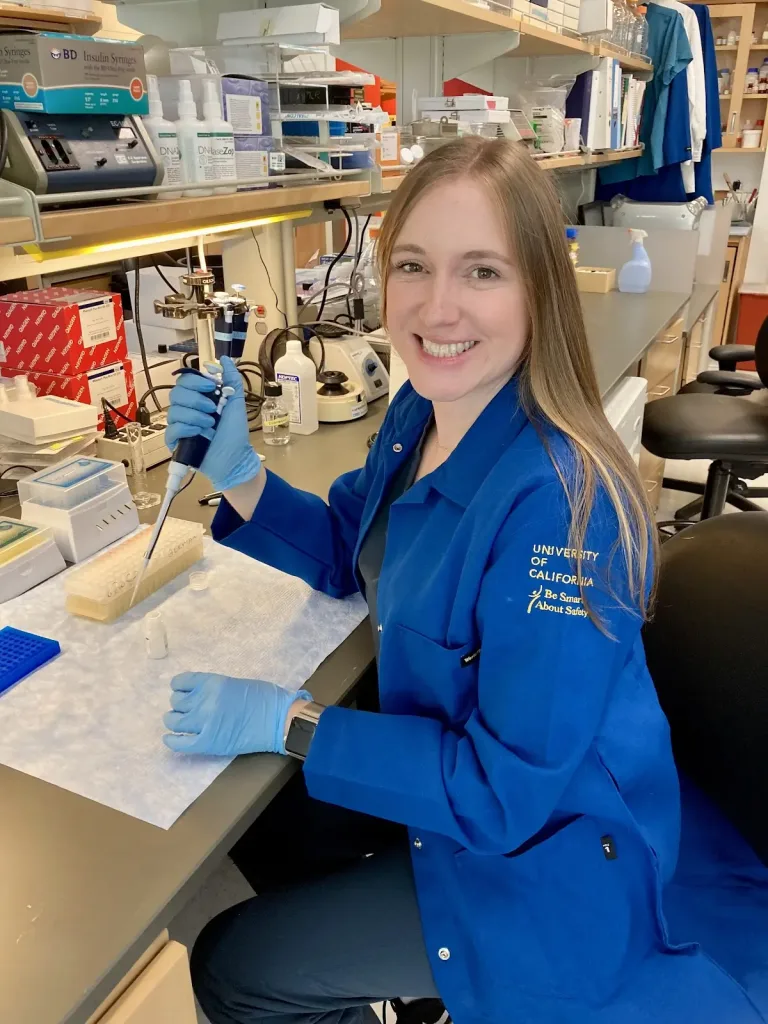
Kristen Lavelle
Q. What inspired you to focus your research on diabetes, and how do you hope your work will contribute to the understanding or treatment of T1D?
A. I was diagnosed with T1D when I was 10 years old. When I first tell people this, the typical follow-up question is: “Oh, so you always knew you wanted to be an endocrinologist, then?” But the answer is no, not at all – I discovered through the (very long) journey to medical school then internal medicine residency then endocrinology fellowship that I felt most fulfilled when doing something that could help others deal with the same disease that I knew so intimately.
I hope that my current work on the discovery of novel T1D genes will expand our understanding of how the disease develops and ultimately lead to a targeted approach for its prevention and/or cure.
Q. As a female researcher in a field that has historically been male-dominated, what unique perspectives do you believe you bring to diabetes research, and how have these perspectives influenced your work?
A. While there are certainly unique struggles that women in science still face today, I do not necessarily think we have inherently unique perspectives when it comes to research. In fact, to do so in my mind undermines the assumption of our equal capabilities and does our gender a disservice.
Q. Reflecting on the challenges and opportunities for women in scientific research, what advice would you give to young women aspiring to enter the field of diabetes research today?
A. Don’t be afraid to raise your hand and ask questions if you don’t understand something! Stop apologizing for things and beginning with a “sorry.” Accept compliments and take pride in your accomplishments. You deserve to be there, you deserve to be heard, and you deserve to be seen – you and your thoughts matter.
Q. Looking ahead, what are some emerging areas of diabetes research that excite you, and how do you see the role of female researchers evolving in these areas?
A. Given the recent FDA approval of teplizumab (Tzield), I am currently most excited about emerging therapies that target the immune system changes that happen before a person is diagnosed with T1D, aiming to prevent the disease altogether.
Q. How do you see the collaboration between researchers, clinicians, and patients evolving in the field of diabetes research, particularly with the increasing involvement of female scientists and researchers?
A. Now more than ever before, there is a focus on the person-centered approach in medicine and less of the traditional “doctor knows best” dogma. As both a female physician-scientist and a patient living with T1D myself, I am very encouraged to see this evolution. We must listen to our patients so that we can learn what they are struggling with, and where we can do better as clinicians and researchers.
These insights from Janelle Tobias and Kristen Lavelle underscore the dynamic role of female researchers in advancing our understanding and treatment of T1D. Their dedication is a beacon of hope for countless individuals living with this condition and a call to action for the next generation of scientists. By supporting the Diabetes Research Connection, we can ensure these vital voices are heard and their research flourishes.
The Importance of Community Support
Community support stands as a pillar in the journey toward groundbreaking discoveries in T1D research. It’s the fuel that powers innovation, drives progress, and transforms the lives of those living with T1D. DRC thrives on this support, highlighting how every contribution, big or small, plays a crucial role in advancing our understanding and treatment of T1D.
The collaboration between researchers, clinicians, and the T1D community is vital. Community engagement doesn’t just fund research; it builds a bridge between the lab bench and real-world applications, ensuring that the needs and experiences of those living with T1D are at the heart of scientific inquiry.
Support from the T1D community also fosters an inclusive environment where female researchers and diverse voices are heard and celebrated. It empowers young scientists to pursue their passions and contributes to a more dynamic and innovative research landscape.
As we push forward, the importance of community support cannot be overstated. It’s what makes the next breakthrough possible. Whether through donations, advocacy, or participation in research, every action you take helps move us closer to a future where T1D can be effectively managed or even cured. Let’s continue to stand together, supporting the tireless efforts of researchers at DRC and beyond, as we journey toward a brighter, healthier tomorrow for all impacted by T1D.
Together, Towards a Cure
As we celebrate the incredible women in T1D research, it’s clear that their contributions are not just advancing science – they’re paving the way for a future where T1D can be managed more effectively or even cured. From groundbreaking stem cell research to innovative genetic discoveries, these researchers embody the spirit of innovation and dedication.
Yet, their success and the progress in T1D research as a whole depend on the support of a community that believes in the power of scientific discovery. The stories of researchers like Janelle Tobias and Kristen Lavelle remind us that behind every scientific breakthrough is a network of supporters, collaborators, and individuals living with T1D, all united in the quest for a better tomorrow.
Let’s continue to champion the cause of T1D research, supporting DRC and its mission to drive the next wave of breakthroughs. By standing together, we can make a significant impact, ensuring that the fight against T1D remains strong and continues to move forward. Your support, whether through donations, advocacy, or participation in research, is crucial. Join us in this vital mission, and together, we’ll keep pushing the boundaries of what’s possible in T1D research.

